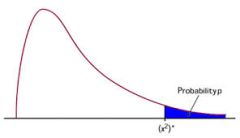Exponential Function Graph maker
Instructions: This Exponential Function Graph maker will allow you to plot an exponential function, or to compare two exponential functions. You need to provide the initial value \(A_0\) and the rate \(r\) of each of the functions of the form \(f(t) = A_0 e^{rt}\).
Exponential Function Graph Maker
This graphing tool allows you to graph one exponential function, or to compare the graph of two exponential functions. These exponential functions will have the form:
\[f(t) = A_0 e^{kt}\]In order to get the graph, you just need to specify the parameters \(A_0\) and \(k\) for one or two functions (depending on whether you want to graph one function or if you want to compare two functions).
But, how do you find an exponential function from points?
Technically, in order to find the parameters you need to solve the following system of equations:
\[y_1 = A_0 e^{k t_1}\] \[y_2 = A_0 e^{k t_2}\]Solving this system for \(A_0\) and \(k\) will lead to a unique solution, provided that \(t_1 = \not t_2\).
Indeed, by dividing both sides of the equations:
\[\displaystyle \frac{y_1}{y_2} = \frac{e^{k t_1}}{e^{k t_2}}\] \[\displaystyle \Rightarrow \, \frac{y_1}{y_2} = e^{k (t_1-t_2)}\] \[\displaystyle \Rightarrow \, \ln\left(\frac{y_1}{y_2}\right) = k (t_1-t_2)\] \[\displaystyle \Rightarrow \, k = \frac{1}{t_1-t_2} \ln\left(\frac{y_1}{y_2}\right)\]In order to solve for \(A_0\) we notice from the first equation that:
\[A_0 = y_1 e^{-k t_1} = y_1 \frac{y_2}{y_1 e^{k t_2}} =\frac{y_2}{e^{k t_2}} \]How to graph an exponential function
An exponential function of the form that was specified above will have a characteristic exponential shape, and its general form will depend on whether the rate \(r\) is positive or negative.
For a positive rate \(r\) we will have exponential growth , and for a negative rate \(r\) we will have exponential decay .
What are the main characteristics of exponential graphs?
They have very specific shapes, as they grow or decay (depending on the sign of \(r\)) very rapidly. There are not that many types of graphs in this case. Only rapid (exponential) decay or rapid (exponential) growth.




